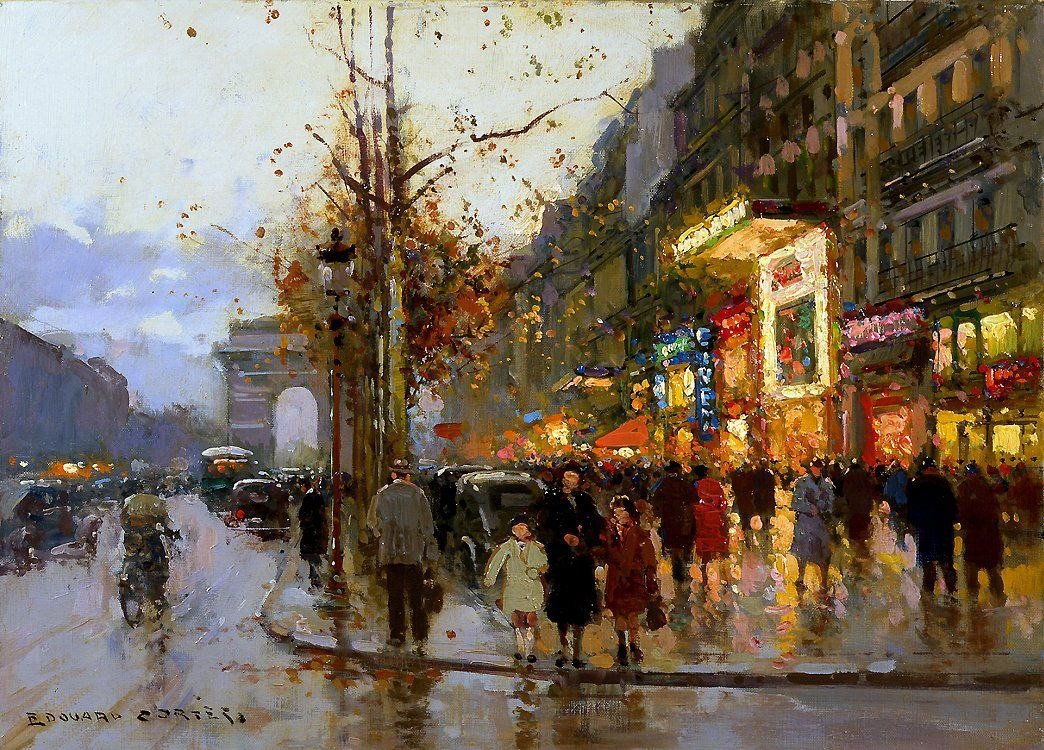ÉDOUARD CORTES, THE ARTIST WHO WAS MADLY IN LOVE WITH PARIS

Édouard Leon Cortès was born on August 6, 1882. He praised the beauty of the city on the Seine, and is certainly one of the culprits of the emergence of the meme “see Paris and die”. Either from happiness, or from the acknowledgment, that there is nothing worthy of attention in the whole wide world. In fact, Cortès’s paintings set us on the opposite course of thought, they evoke a desire to see Paris and live. To live, of course, in this particularly glorious city.
This is the case when the fashionable characteristic “patina” like on vintage postcards is absolutely true: the artist has a predominance of warm colors, and besides, there are really many lamps emitting a soft, cozy light in his Lutetia paintings. But their author knew in his life not only the warmth of Parisian streets, but also the crude cold of damp trenches.
The artist was a convinced pacifist, but who cared about that during the First World War? When the war front approached his native land, Cortès joined the infantry regiment and got to the front lines, as they would say in our time, at ground zero. There he was wounded by a bayonet, then he ended up in the hospital, and after his recovery they found a more appropriate application for him: to draw maps for the military at the headquarters. He gave free rein to his pacifist beliefs after the war, refusing the highest French order of merit, the Legion of Honor. He spent the rest of his days sheltered, living a quiet family life.

It seems that Paris is the only thing that inspired and fed his creative imagination. Paris at day and night, sunny and washed by pouring rain, Paris in spring, summer, autumn and winter. The song I Love Paris by Cole Porter has the lyrics Édouard Cortès lived by: I love Paris every moment, every moment of the year is exactly about him. The artist tried to make each subsequent work even more expressive and more perfect than the previous one. For six decades of practice, he really achieved perfection in his art, which contemporaries called poetry in painting.
An important notice: Cortès loved Lutetia from a distance: from the mid-1920s, he and his family moved to Normandy, where he lived for almost half a century. Only love it when it’s gone?
The post-impressionist artist also died not in Paris, but in his native town of Lagny-sur-Marne in Normandy, and it was there that a street was named in his honor. And still, there is no rue Cortès in Paris.





















